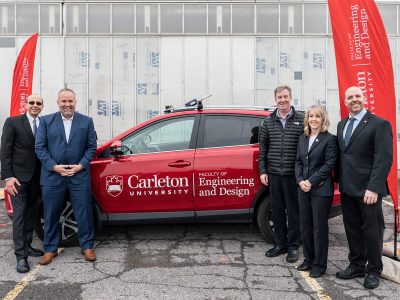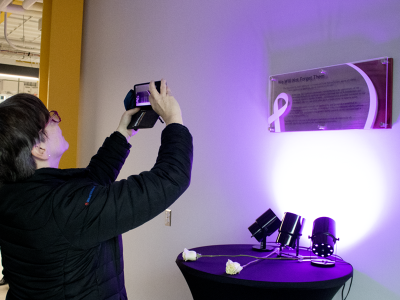By Ainslie Coghill
Photos by Ainslie Coghill
In the summer of 2019, the Kiashke Zaaging Anishinaabek – Gull Bay First Nation (KZA-GBFN) began harnessing and utilizing renewable energy with its Giizis Energy solar storage micro grid facility – a first of its kind on-reserve.
Two hours north of Thunder Bay, ON, on the western shorelines of Lake Nipigon, KZA-GBFN is an Ojibway Nation home to approximately 1,375 citizens living on and off reserve. During daylight hours, 100 per cent of the community’s energy can be powered by the new micro grid’s 1200 solar panels.
“This is the beginning of a shift from having to rely on someone else to provide power to the community, versus having the ability and power to do it ourselves,” says AJ Esquega, Energy Projects Coordinator for KZA-GBFN.
“It is a way to take control of our energy landscape and utilize gifts from the Creator to power and sustain our People in a good way for generations to come.”
Both sides of Esquega’s family are from KZA-GBFN, and his close connection to the community and determination to make it a better place to live has motivated him all his life.
Reducing the reliance on diesel fuel was a top priority for the community, which is also faced with residential overcrowding, deteriorating conditions in existing homes, and water insecurity.
Building on the momentum of the new micro grid, a unique partnership between KZA-GBFN leadership and a team from Carleton University has been taking further steps towards renewable energy solutions for the remote community.
Credit is due to a former engineering student with connections to KZA-GBFN, Tony Gunka, who was the first from Carleton to contact the community about sustainable housing solutions. From there, Gunka provided a platform for continued dialogue between the community and a newly established team of students called the Boreal Builders.
A fourth year Capstone project team, the Boreal Builders are now exploring an affordable eco-home design that incorporates KZA-GBFN’s knowledge, goals and vision for its sustainable future. To learn more about the main concerns of KZA-GBFN community members, they knew it would be important to visit, ask questions and listen.
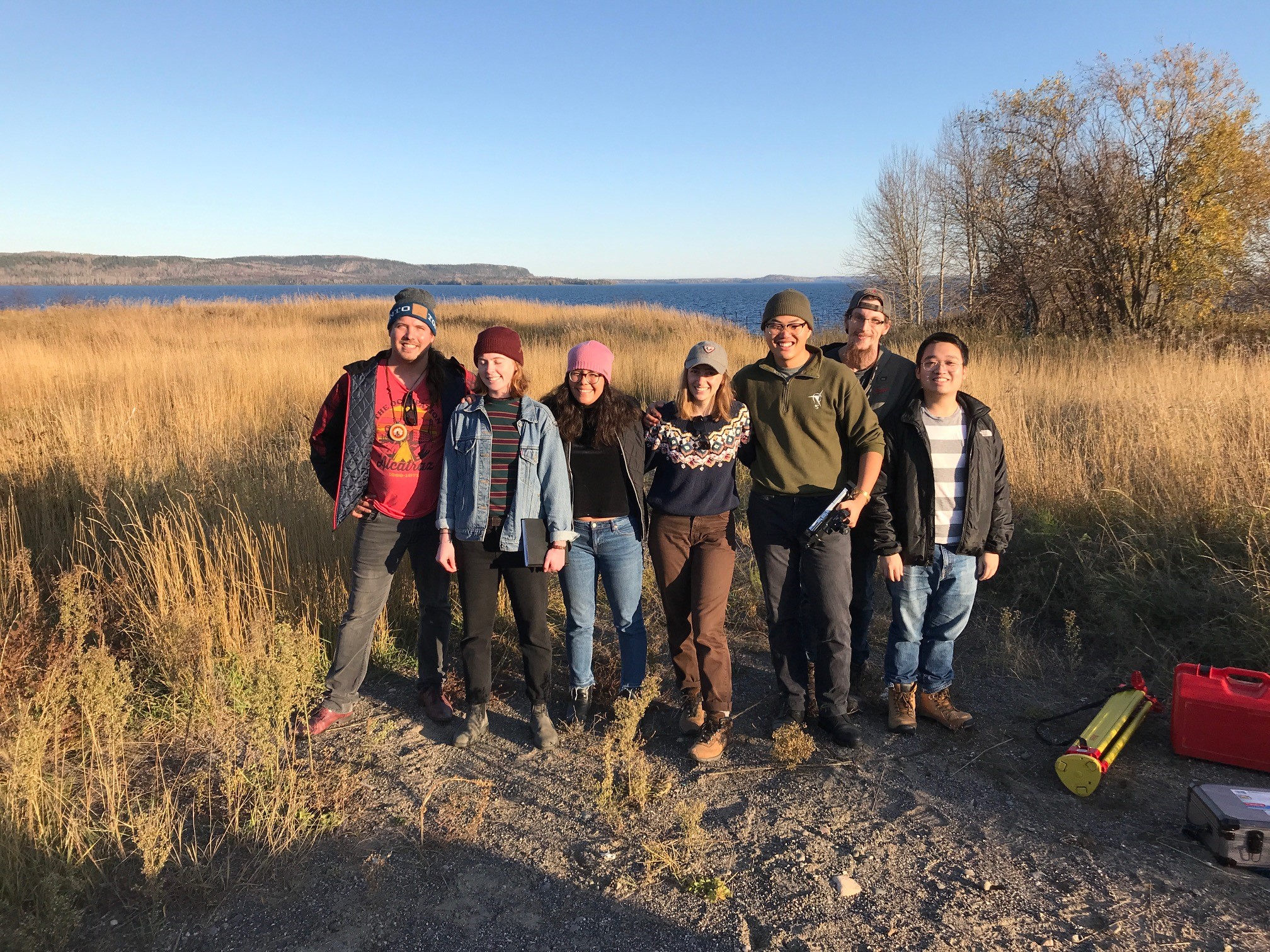
The Boreal Builders Capstone design project team with AJ Esquega (far left) in KZA-GBFN. (Photo courtesy Boreal Builders)
In the fall reading week of 2019, the Boreal Builders traveled to Gull Bay for their first in-person meeting and design charrette with KZA-GBFN Chief Wilfred N. King, Council and community.
“To me, their visit was very impactful and meaningful,” says Esquega. “I can tell that the Chief and Council were very pleased with their presentation and dedication to the project.”
The trip was an equally rewarding learning experience for the team of undergraduate students.
“Our design is being shared with the community at each milestone, with space allotted for feedback,” says Boreal Builders project manager Jonique Gardien. “I see so much potential for inclusive design in the engineering industry, and how we can rework our consultation methods as practicing engineers,” she adds.

Project Manager Jonique Gardien
Along with Gardien, the Boreal Builders team includes Andre Markus, Joshua Reinhart, Eric Ho, Isabella Carias and Caroline MacSween, from the architectural conservation and sustainability, civil, environmental and renewable energy engineering streams. Their diverse portfolio of technical skills and leadership experience has made for a uniquely skilled group.
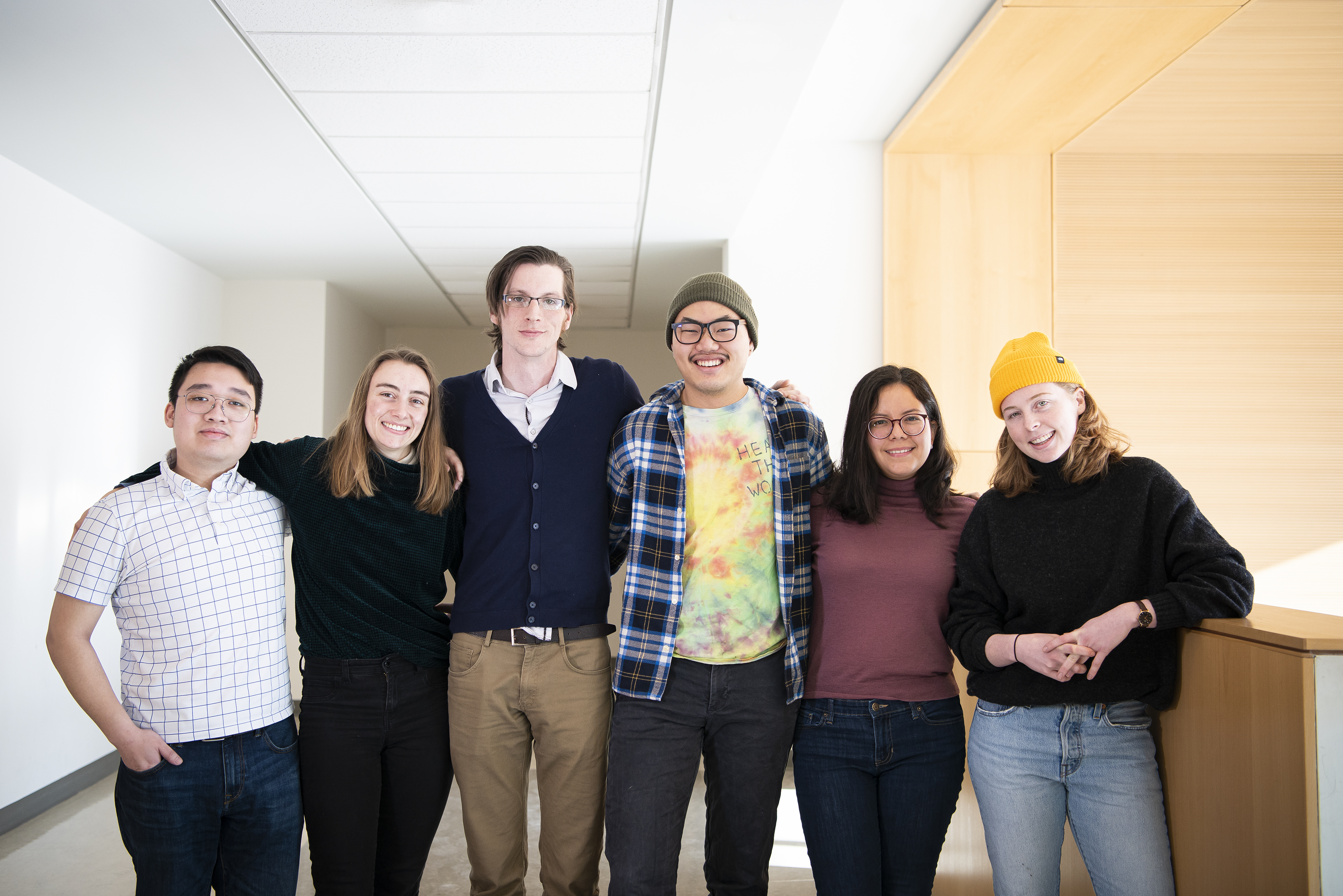
“For us, as students, we’re getting exposed to a self-regulated work environment where we must apply the skills we’ve acquired through our academic careers in a practical setting,” says Markus.
“Technical solutions can have social implications and a key takeaway of this project is learning to appreciate that and do it effectively,” adds Ho.
For the success of their project, the Boreal Builders have secured a network of mentors, and are supervised by Professor Scott Bucking from Carleton’s Department of Civil and Environmental Engineering (cross-appointed with the Azrieli School of Architecture and Urbanism). Bucking also leads Carleton’s well-known Northern Nomad Tiny House project, and its second iteration, aptly called Tiny 2.0.
His research focuses primarily on community-scale projects and building pathways to achieve ambitious sustainability targets like net-zero energy and net-zero carbon.
“The Gull Bay project benefits from some of the experience and confidence gained through the Northern Nomad, and students were really motivated to take some of what we’ve learned and apply it outside of the Carleton community,” says Bucking.
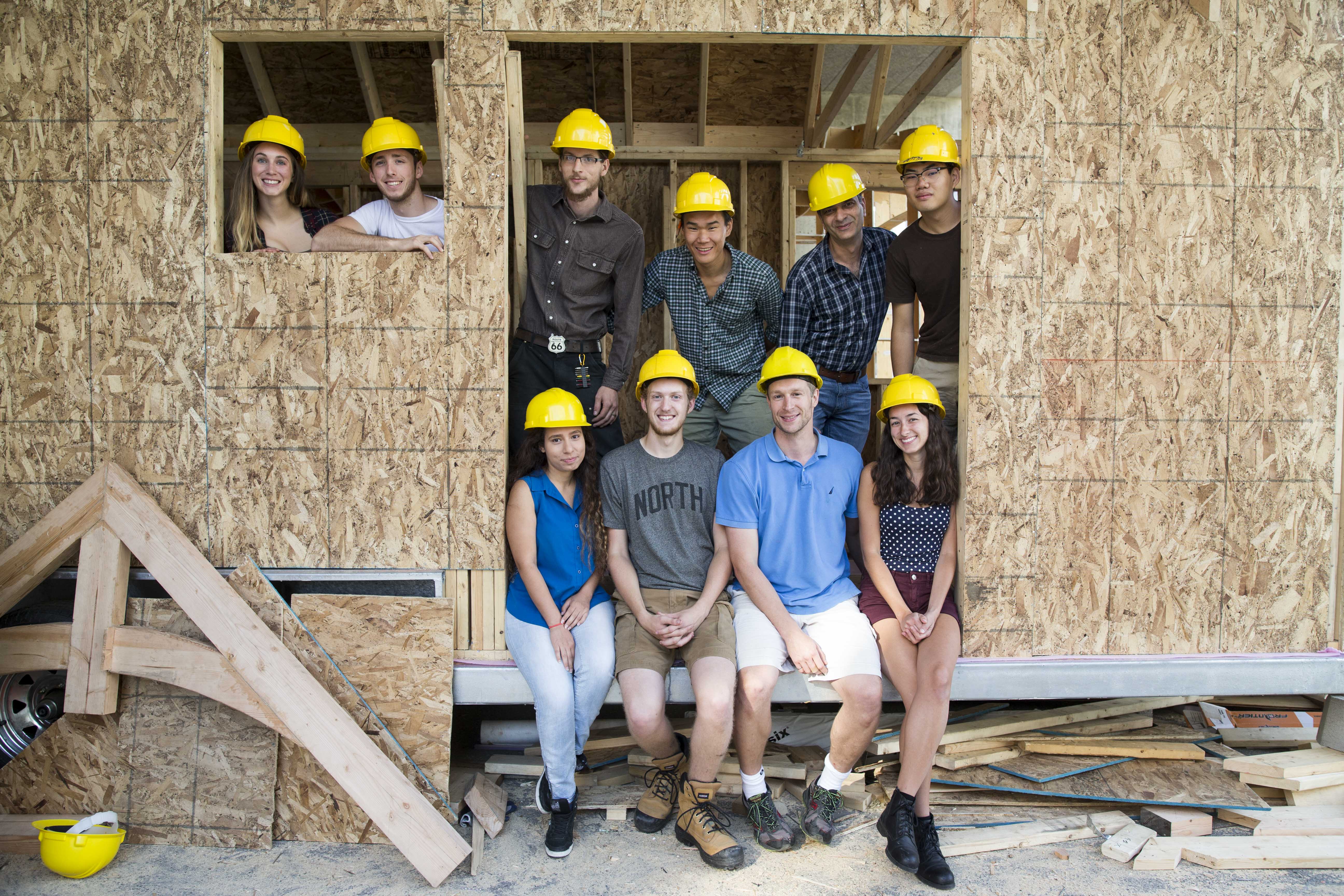
Professor Scott Bucking (front row, centre right) also leads Carleton’s Northern Nomad Tiny House team, and both Reinhart and Ho (pictured in back row) took part in that project before Boreal Builders. (Photo by Chris Roussakis)
Bucking remembers Gardien knocking on his office door long before most students begin thinking about their fourth year project, ready to pick up where previous students left off, and eager to get started.
He says that through the consultation process with KZA-GBFN, they agreed on an approximately 600 square foot detached dwelling rather than a tiny home. Though it will share similar design principles, it will be considerably more spacious than the Northern Nomad’s modest 220 square feet.
The team has prioritized six systems of focus for their home design: walls, roof, foundation, a mechanical system, energy production and water systems. Though they work collaboratively, each team member leads the development of a particular component. With support from the Department, the team borrowed site evaluation equipment to take to Gull Bay which allowed them to create a topographic map of where the house will be built.
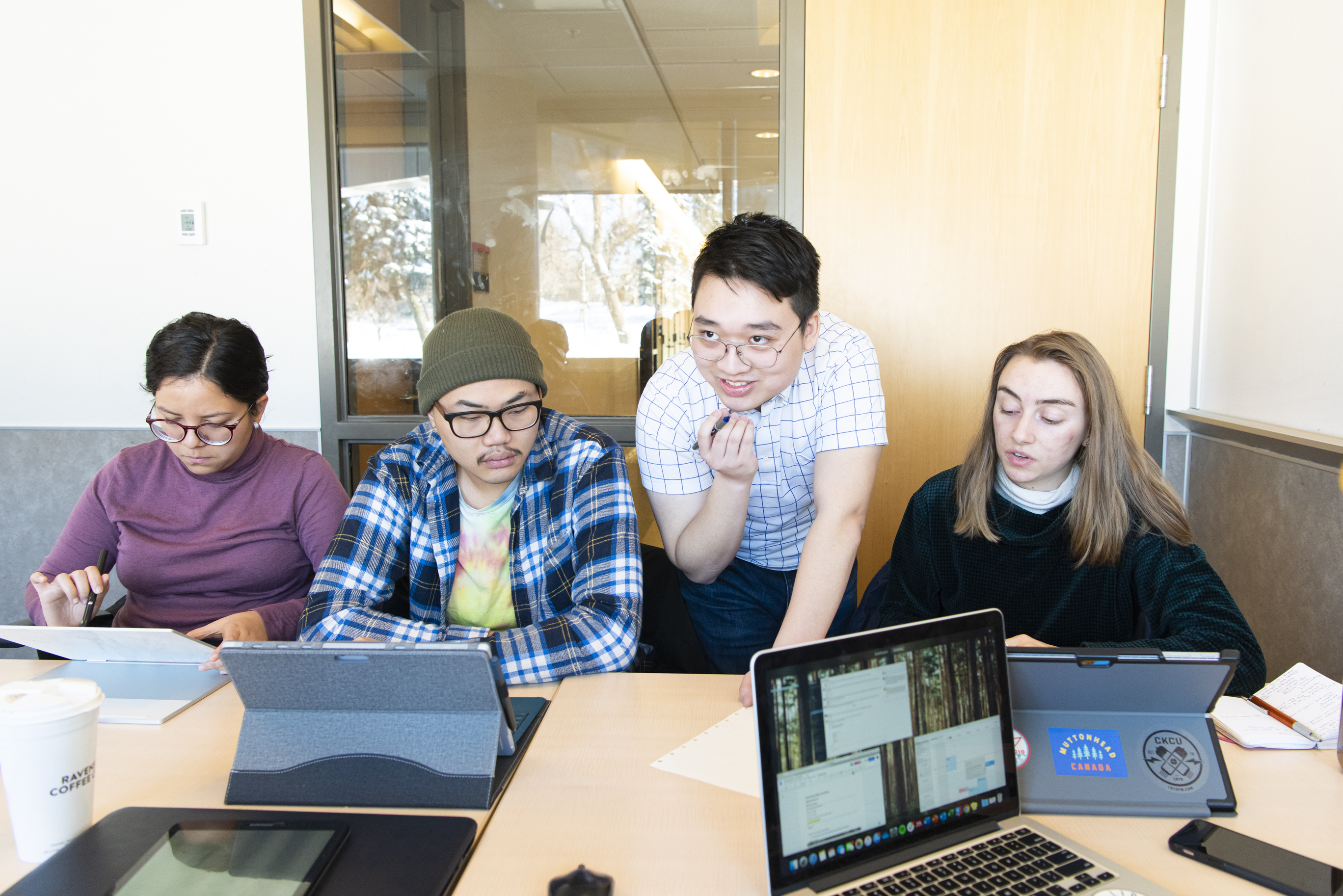
Esquega and the team are working closely together on funding applications, and if successful, the first eco-home could be built this summer. While Capstone projects typically last eight months, Bucking and the team will evaluate available opportunities and resources for the students to continue working into the summer months.
“The project will be given to the community upon completion, with an ultimate goal of sharing the technical specifications and full design of the house with manufacturing contacts that are interested in working on it further,” says Gardien.
In the meantime, KZA-GBFN has also taken on other initiatives to conserve energy, first by replacing all the external lighting on community buildings with energy efficient LEDs. With the added energy supply from the micro grid, and through Chief Wilfred N. King’s advocacy and leadership, plans for a new water treatment facility are also underway.
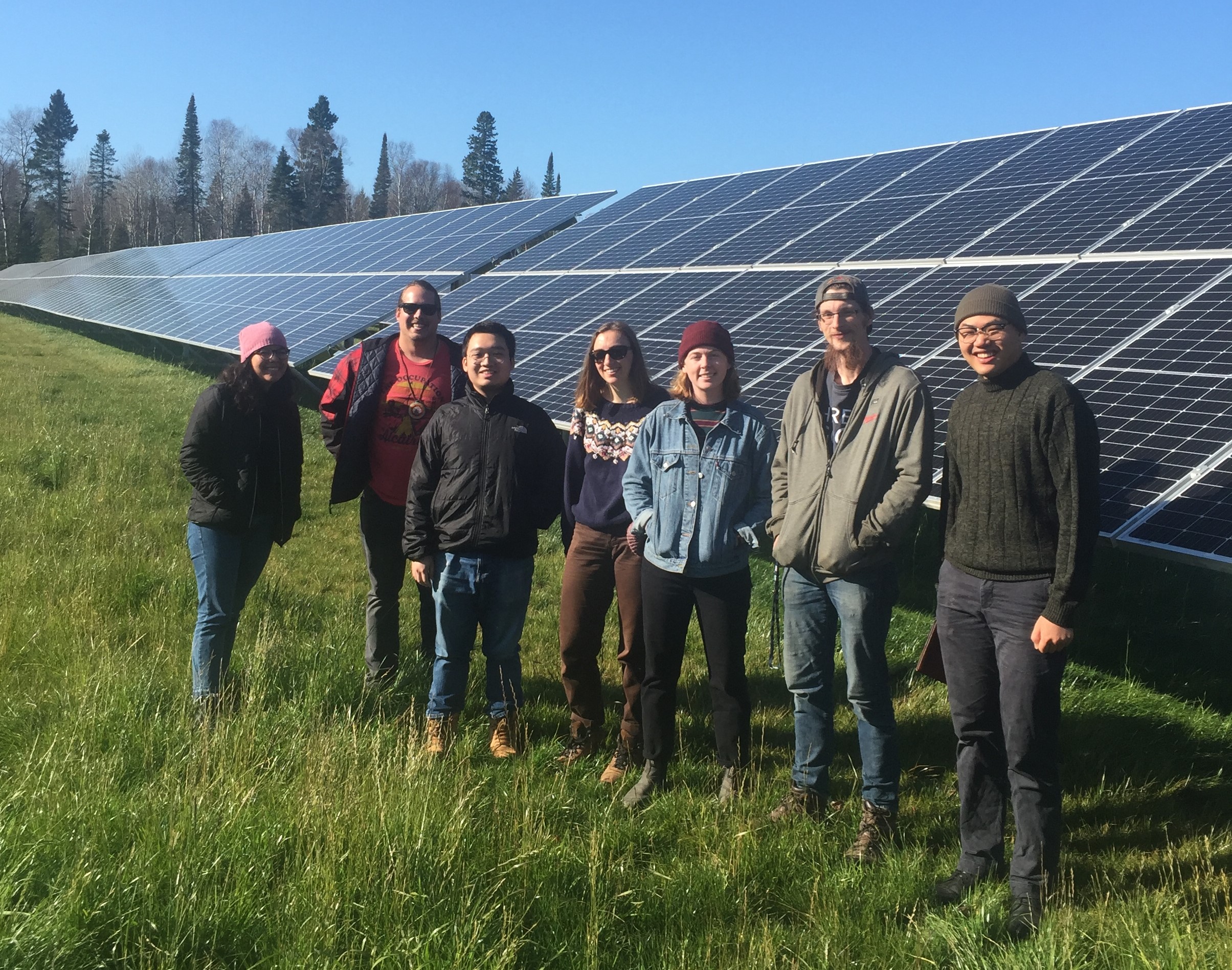
The Boreal Builders and AJ Esquega with the micro grid. (Photo courtesy Boreal Builders)
“You never know,” says Esquega, “perhaps one day a team of Gull Bay builders will be constructing sustainable and energy efficient eco-homes.”
“One might misguidedly assume that because it’s remote, the community is technologically deprived,” Bucking points out. “But it’s quite the contrary. The community, in terms of electrical infrastructure, is way ahead of what you’re likely to see as you move further south.”
At Carleton, Bucking says that the ethics process and the advice his team has received on engaging with Indigenous communities in fair and unbiased ways will help shape their future success as engineers.
“One thing Carleton does is grow leaders. Sometimes leadership is an opportunity, and if you have the motivation and technical skills, a university degree can be a trampoline to begin solving pressing real world problems,” he says. “And our Gull Bay partners have been very patient and great enablers of our students’ success.”
Monday, February 10, 2020 in Architectural Conservation and Sustainability, Architecture, Capstone Design Projects, Energy, Environmental, Experiential Learning, Feature Stories, Interdisciplinary, Lead Feature Story, Research, Sustainable and Renewable Energy, Undergraduate, Water, Women in Engineering
Share: Twitter, Facebook
